We love agaves--big, little, soft, spiny. Our enormous specimens are putting on a big show and absolutely blooming like crazy!


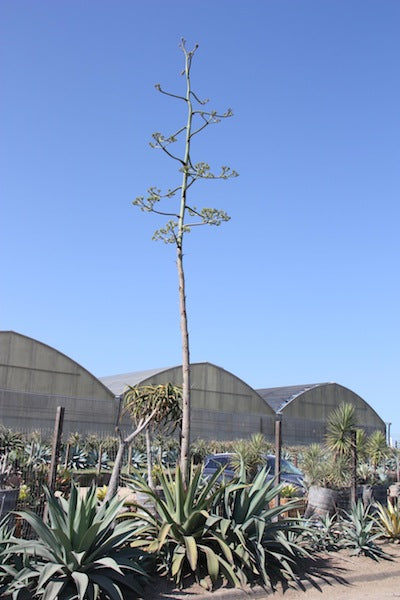
Seeing the plants flower gives new meaning to a sculpture in the "XERIC - MIX: PLANTS, PATTERNS, AND STICKS" garden designed by Hill & Dale Landscapes.
See the resemblance?


All About Agaves
If you want to know everything about agaves, pick up the wonderful book by Greg Starr, Agaves: Living Sculptures for Landscapes and Container Gardens.
Here are a few of my favorite tidbits from the book:
DISTRIBUTION
"The genus Agave is wholly New World, with species found in the United States and south into Mexico and Central America, northern South America (Columbia and Venezuela), and the Caribbean. In 2002, Abisai Garcia-Mendoza estimated that there were about two hundred naturally occurring species with an additional forty-seven subspecies and varieties." There's more to the genus than tequila or century plants.
FLOWERS
"Nearly all agaves, along with most bromeliads such as pineapple, are somewhat peculiar in their flowering habit. They grow vegetatively for many years (though not the hundred years that gave rise to the common name of century plant) without producing a single flower, and then when they get the urge to reproduce, they send forth an enormous stalk with hundreds and hundreds of them. These plants that flower and set seed only once in their lives are called monocarpic."
The "fabulous inflorescences usually signal their death, as all of the carbohydrates that have been made over the years are directed towards the flurry of sexual activity. Depending on the species, this free-for-all, no holds-barred approach can last a month or more." He follows that with something about how you have to appreciate this length of sexual activity after 25 to 30 years of celibacy.
So, what we're witnessing in the nursery right now is a rather spectacular last show by some of our large specimens.
"The type of inflorescence does not affect whether a species is solitary or offsetting. . . . For most home gardeners, it is important to consider whether the plant is solitary or produces offsets as this characteristic will affect placement of the plant in the landscape. An offsetting type will benefit from ample room to allow for full developments of the large clusters. . . . Meanwhile a solitary species, even if it is extra large, will generally need no more room than its expected maximum size."
Notes from Robin Stockwell
The Agave most commonly referred to as “the Century Plant” is Agave americana, which has been used in the landscapes throughout California for over 75 years. These varieties are often found planted around the California missions. The different varieties of agave have different ages to bloom time. Agave americana is about 25 years. A. vilmoriniana is about 12 to 15. Some Agave flowers will produce seed and some will produce bulbils, or plantlets, on the flower stalk, in addition to possibly producing offsets around the base of the plant.
Some of our Spectacular Agaves
While our giant specimens are currently putting on the biggest show, there are plenty of smaller varieties that don't require a forklift for garden use!
Agave lophantha 'Quadricolor'
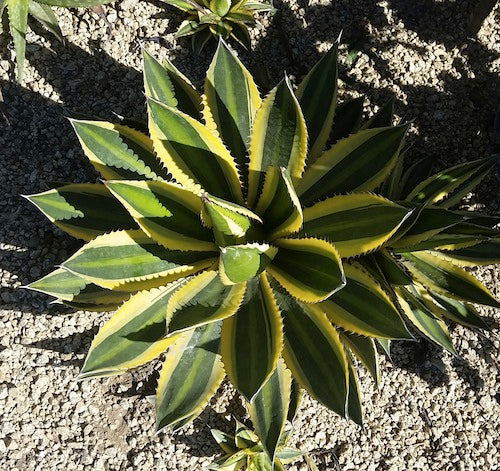
Agave blue glow in front; Agave blue flame in rear

Agave geminiflora

Agave schidigera 'Shira ito no Ohi'

Many of you will remember this display from the front of the nursery along Elkhorn Road where the softer-leaved Agave attenuata were planted with aeoniums.


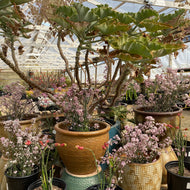

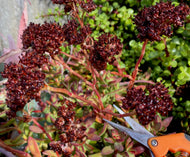
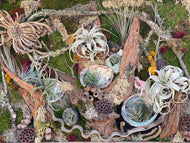
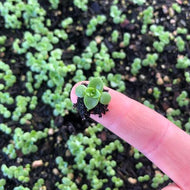
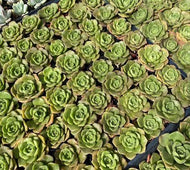
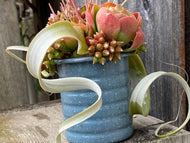
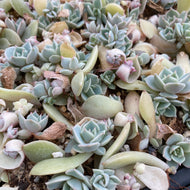
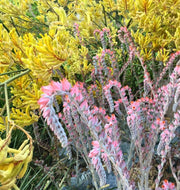
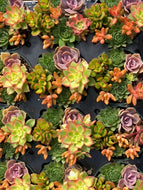
1 comment
Hello,
I am from Mesquite, NV, and my husband and I travelled to Prescott, AZ. On a day trip over to Jerome, elevation 6k ft, i saw this beautiful blossoming flowers of what I thought was a yucca or an agave. Now that i am on your site, I see it is an agave (it is the first two pictures of your page). Can you tell me, will this agave grow in my climate? We only average four inches of rain, and now I’m afraid if i can grow it I won’t be around to see it bloom!